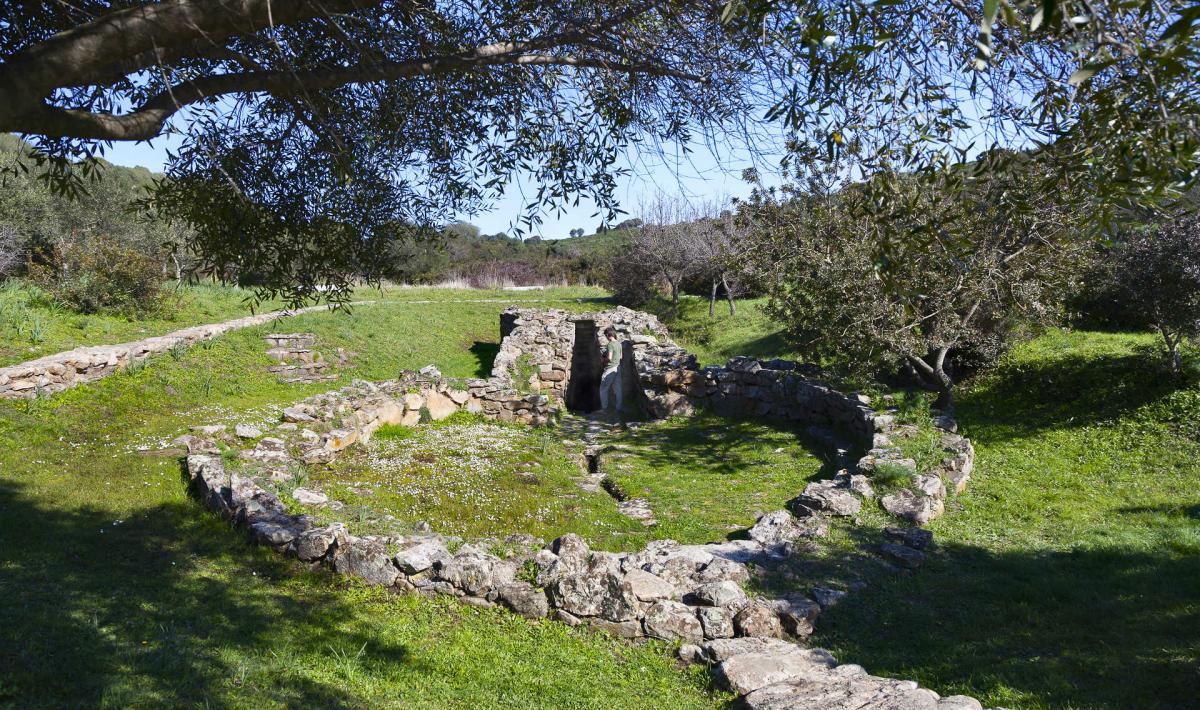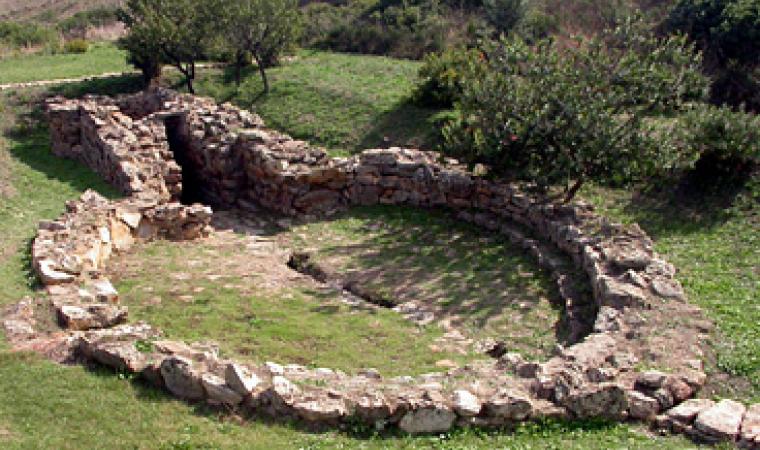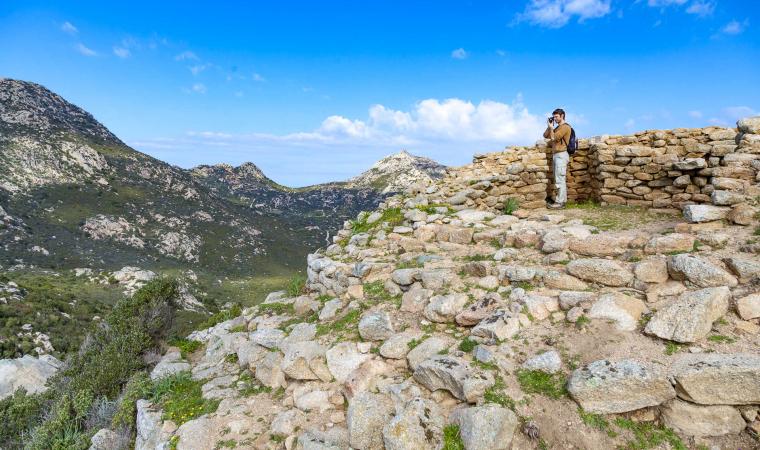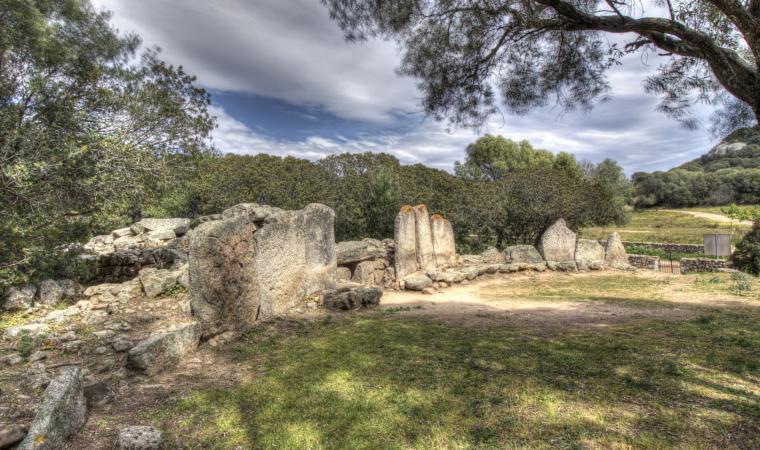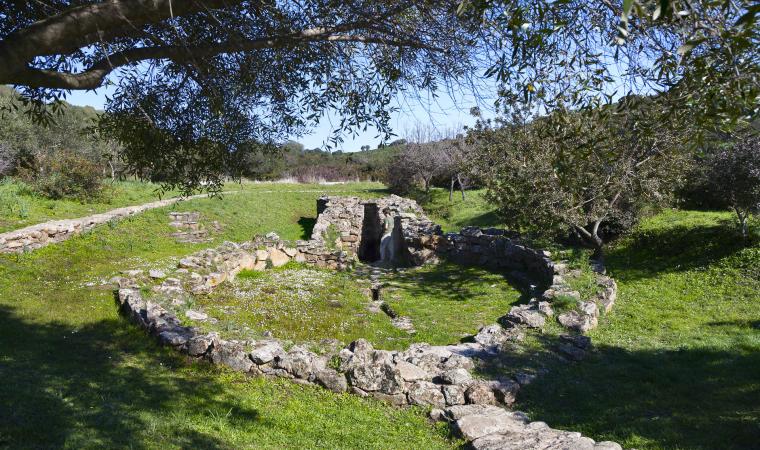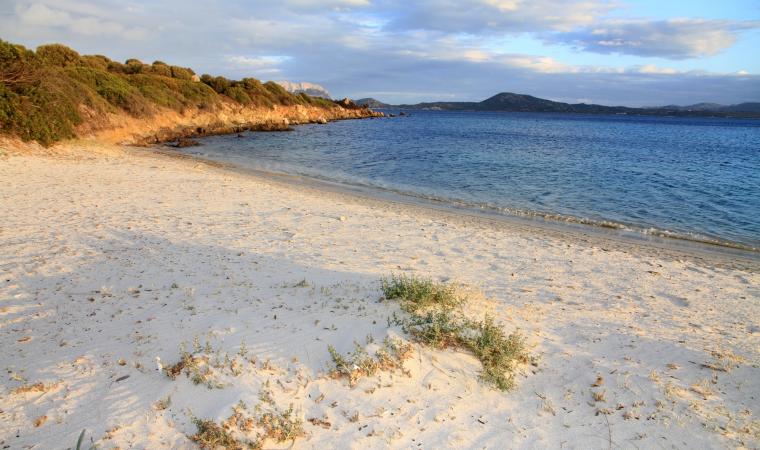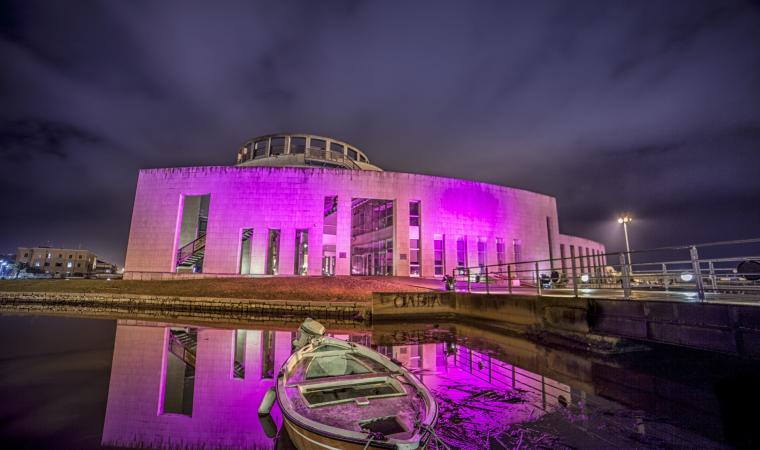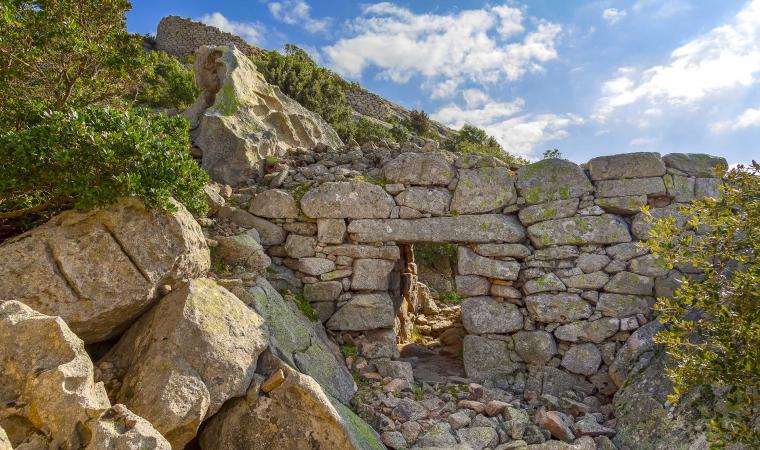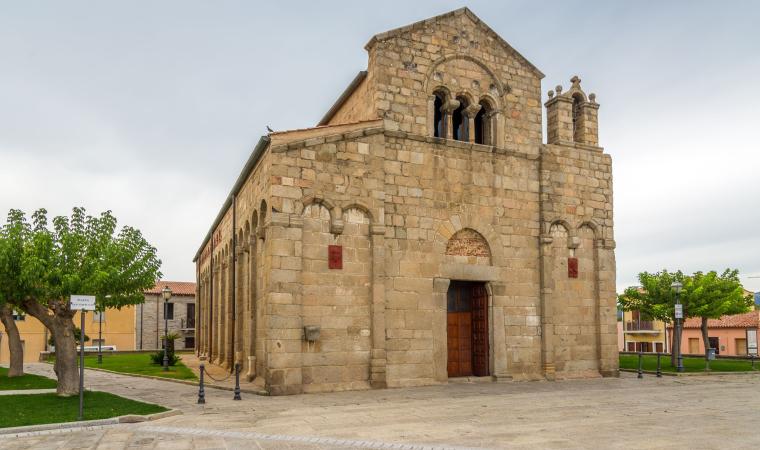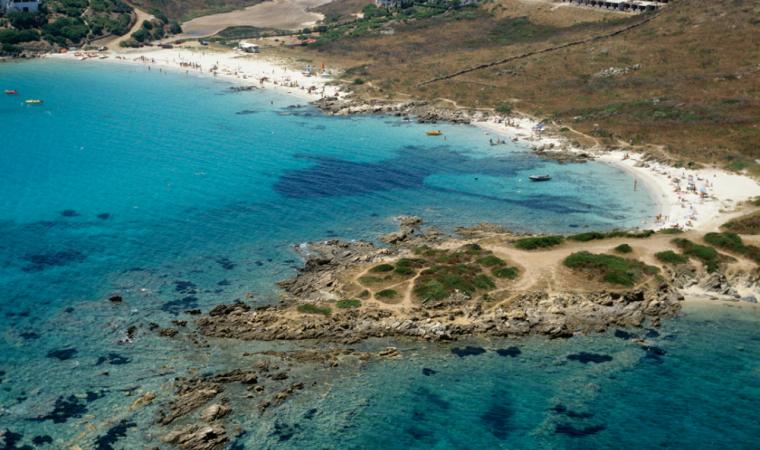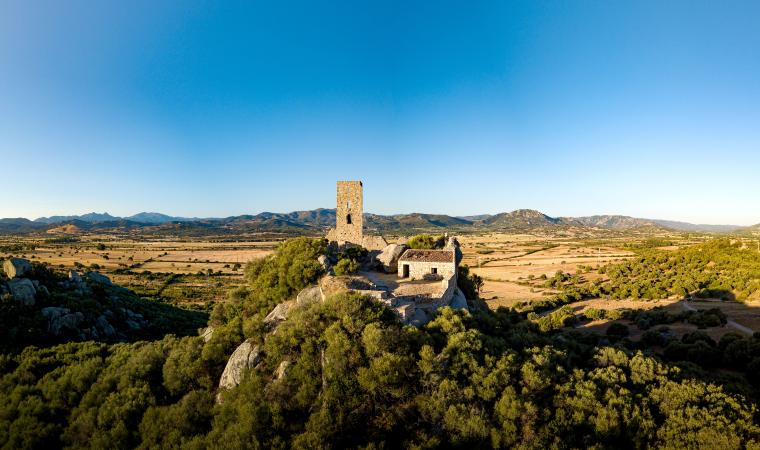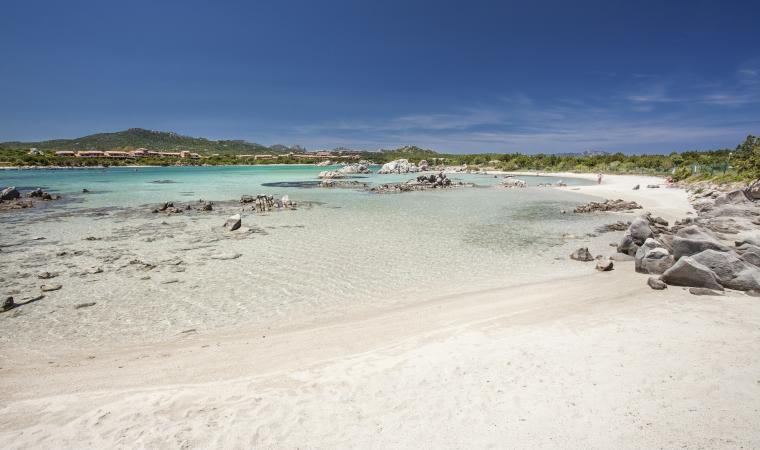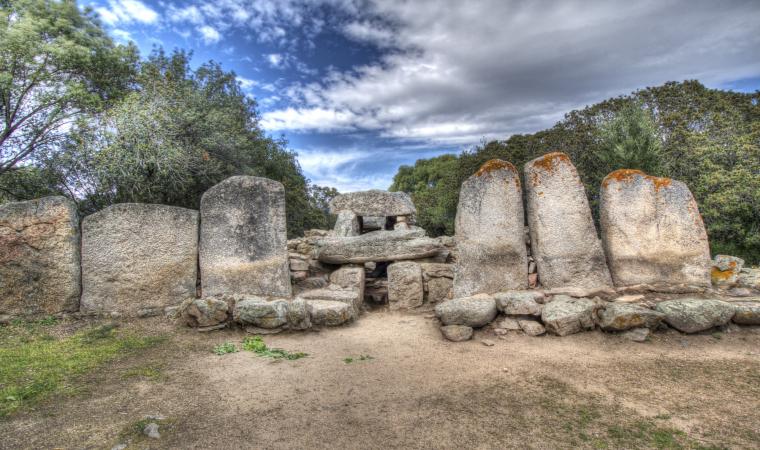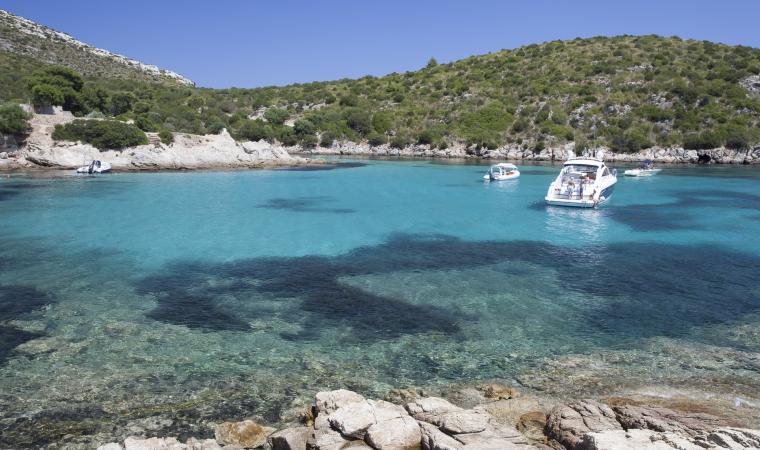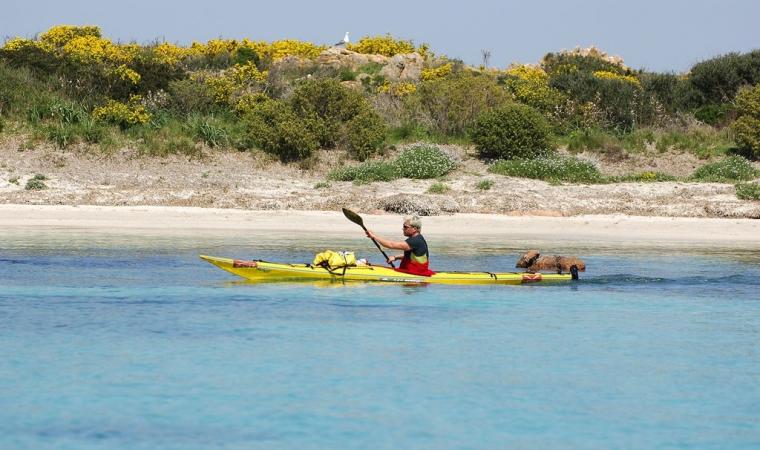Uncovered in the 1930s when locals were searching for fresh water springs, it comes to no surprise that the sacred well known as sa Testa had been chosen by the Nuragic Age settlers to honour their water divinities. Today it is a site very popular with archaeology enthusiasts, especially those studying Nuragic culture. The old shrine dates to between XV and XIII centuries BCE and sits just outside of the town of Olbia. It is just under 18 metres long and made of granite, trachyte and schist cut into blocks that were then carefully finished. The external part is reminiscent of a door and symbolizes the gateway that separates the world of the dead from that of the living. The shrine has a circular courtyard, a vestibule, a small hallway between the courtyard and the well, and steps that lead down to the water at the bottom.
You will reach the circular garden area through the northern gateway. It was used to perform collective rituals of water worship. The door opens onto 17 steps that lead to the spring that gushes water from the depths of the earth. The well is reached over a floor paved with slabs of schist with, at the centre, a canal that brings water from the outside towards the steps of the well. The well is partially covered with architraves. The deepest underground part of the shrine, a room with a ceiling some seven metres high where the water gathers is covered with a false dome (tholos style). Important relics were found in the sacred area, like jewellery and a small dagger with bronze hilt, parts of a small statue that may have been set between the stone blocks.
Other traces of Nuragic civilisation in the Olbia area can be found in the Riu Mulinu nuraghe, one of northern Sardinia’s most important prehistoric landmarks, and the huge Giant Tomb of su mont’e s’Aba (or s’Ape).
Olbìa, which means “happy” in Greek, was founded by the Greeks and later became a Roman colony. The Romans built an aqueduct, thermal baths and s’Imbalconadu, a typical farm. Don’t miss out on a visit to the city’s museo Archeologico, on the little island of Peddone and the museo della necropoli underneath the lovely basilica di San Simplicio, the city’s patron saint.

